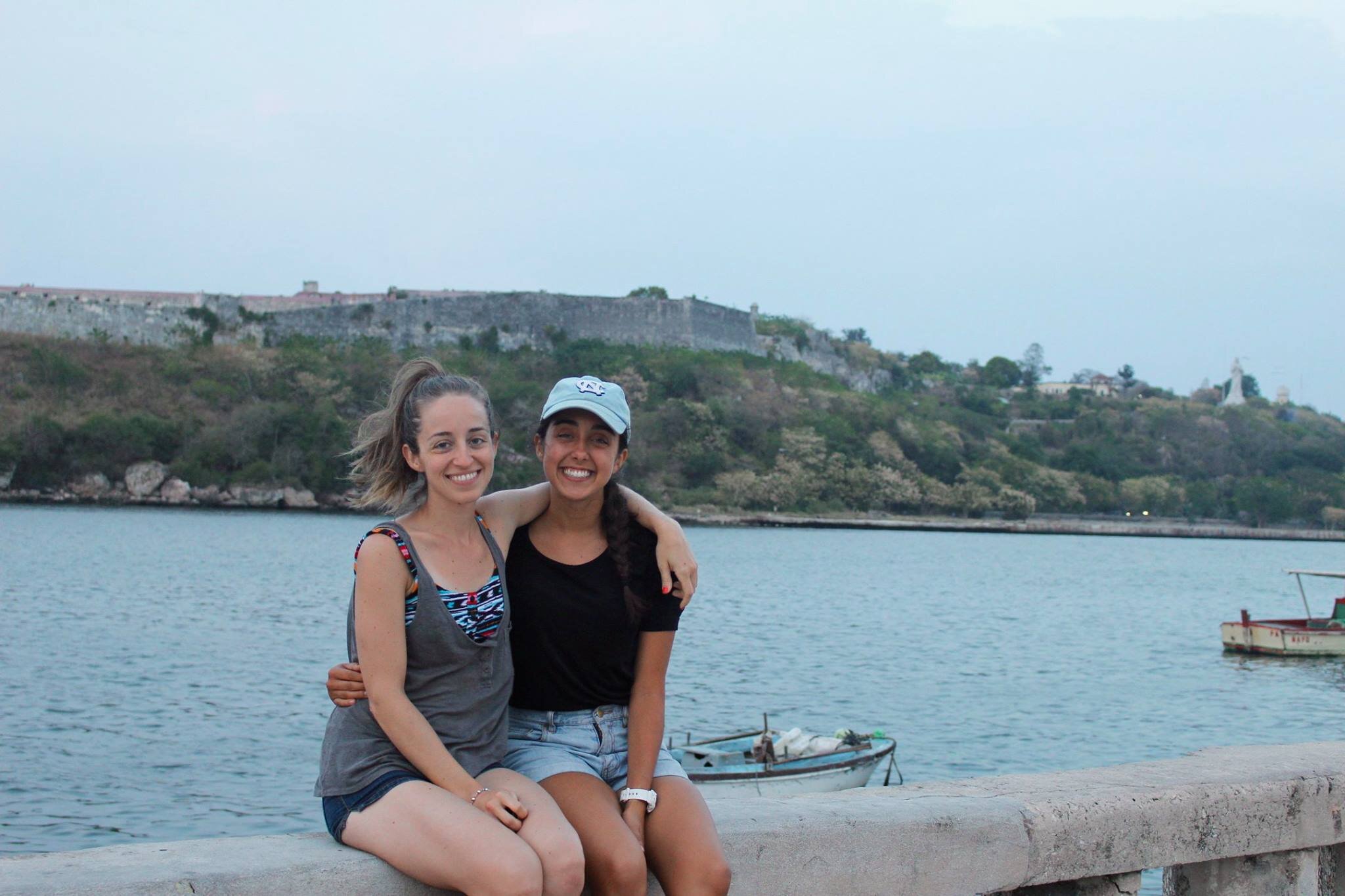Coming Back to Camagüey: CET's Gaby Alemán Shares Her Family's Story
The sticky heat of the afternoon had already begun to cool when my sister and I spot an older woman talking to another at the door of her house. The house sits on the corner of the street, the grey outer walls match her hair. When the other woman leaves, we approach her. I introduce myself and ask her how long she’s been living in this particular house; she crosses her arms and leans against the door frame, but responds “about 18 years.” My sister’s shoulders sag—we had been walking around the outskirts of Camagüey’s city center for the past two days searching for clues about the house—and life—our abuelos had left behind 53 years ago. This woman hadn’t lived in the house near enough to know them.
My sister Belén begins to explain anyway, describing who we are and our family’s story. But as soon as she mentions “Vassallo”—our family name—the lady cuts her off. “Oh, this used to be their house. If you take this path to the end, there’s a couple that lives there that can tell you more.” She points down the sidewalk to a curving path that led behind the house.
We all but run to the closed door at the end of the path. I give it a hardy knock, echoing the pounding heart in my chest. A few moments later, the knob turns and a small, hunched lady shuffles out. “Si?” she asks. I introduce us again, tripping over my words as I tell her our story, rocking back and forth on my heels. She stares between us for a few moments, then excuses her memory—it’s not very good—and leaves to find her husband.
A shirtless man in khakis with white temples emerges. He blinks rapidly at the sight of us; this time my sister takes the reigns and explains our story to him. We are the granddaughters of Antonio Vassallo, and we are visiting for the first time since our entire family left Cuba in 1964. At the mention of our abuelo’s name, a crinkly smile breaks out on his face.
“Of course I knew him, his sister stayed with the house after they left.” He mentions her name and my sister and I glance at each other. There was no other way he could know her name, since we hadn’t mentioned it, which meant… he had known her.
He unlocks the iron gate and ushers us in. We sit at the table, and he introduces himself, Amado, and his wife, Mireya, as he serves us that afternoon’s espresso. He helps his wife sit down and takes the chair next to her, moving slow and deliberate like a turtle. He begins talking about their relationship with our abuelos. When the two of them had moved from Havana to Camagüey, our abuelos had taken them into their home while they got their feet under them. His wife had helped take care of our mother and her siblings when they were babies.
Amado and Mireya
He laughs from deep in his chest remembering how our mother would call him “Amo” because she couldn’t pronounce his full name; she would sleep with them on their cots on the floor before they had beds. Mireya is more animated now, saying how good our abuelos had been to them. They had been the witnesses to their wedding in Havana and had lent them their apartment in the city for their honeymoon before they moved to Camagüey.
“When your abuelo left for Mexico, he tried to get us to leave about three times, but Mireya had kids here already, and I couldn’t leave my family, either. So we stayed. And after the third time, we didn’t hear from them again.” He asks how our abuelo is, but we tell him he passed away about 20 years ago. Amado’s coffee eyes soften and look at both my sister and me; he plays with the tip of the day-old newspaper on the table. “He was a great man, your abuelo.”
Foreigners commonly say Cuba is stuck in time, and granted, I can see why people draw this conclusion after walking the country’s streets, with the century’s old facades and 1950s cars. But I have always maintained that thinking of Cuba as “stuck in time” is a disservice to the people and the culture on the island. Amado and Mireya are one of millions of examples of this. Although the memories of my abuelos and my mother remain, although there are strong ties to history everywhere, it is obvious that the two of them have lived full lives. Have watched their children and grandchildren scurry and play in their backyard, have seen some of them leave the country and some of them stay. And here they sat before us, 53 years later.
53 years later, more than twice my lifetime, I was able to lead my mom down the same paved path, knock on the door, and this time have Amado greet us, blinking hard against the light of the day. His eyes crinkled from his smile when he saw me, but they opened wide when he saw my mom behind me. The two of them embraced, and he held her at arm’s length, just trying to get a look at her. They sat at the same table my sister and I had just weeks earlier; I sat on a separate chair towards the edge of the room holding a camera and snapping photos and videos of their interactions.
Gaby’s mom, Concepción meets Amado for the first time since she left Cuba as a child.
Amado explained the layout of the house, the partition that was still there’s, and how things had changed. They laughed at memories he had of her as a baby, at how her older sister had always been the bossy one—which she agreed was true to this day—and my mom the rambunctious one. I couldn’t imagine what was going through my mom’s head. To be back after so many years, to listen to this couple describe her as a young child, learning how to walk and talk, giving her memories of her beloved father… she could have grown up here.
53 years had passed, and for reasons beyond her control— reasons motivated by pain and fears and histories and narratives and politics—this had not been her life. But 53 years later, she did make a choice when it became available to her: she came back.
And by coming back, she had set the rusty gears in our family into a creaky motion. My aunts and uncles in Miami have played with the idea of visiting as well. My abuela, understandably the most closed off to the idea, asked to see photos and hear stories of her trip, remembering Amado and Mireya fondly. Nothing was automatically fixed or healed in our family. But what I had grown up believing was impossible was suddenly happening before my eyes. And that became a powerful start worth believing in.
Two and a half years later, I now find myself spending most of my time in Havana working for CET, a company that believes in this same start—in bringing US-Americans, both Cubans and non-Cubans from all walks of life, to Cuba to experience the island and its people and culture for themselves. I have witnessed time and time again how rigid narratives and perspectives are being challenged and changed, just like they were and are being challenged and changed in my own family.
Today, Cuba means more to me than just my family’s complicated history. It is a beautiful nation with its own set of hardships, not unlike all the nations in the world. And if there’s one thing I’ve learned in these past two and a half years, it’s that every nation propagates the narrative it sees most beneficial to its self-interests. I grew up with a truth that my family believed to be true, but it was only a half-truth, not the entire picture, and it wasn’t until visiting Cuba for myself that I was able to start filling in what was missing. After 60 years, engagement with the island is the only way to move forward, and all of that begins with a start.
From left to right: Gaby’s dad, Eugenio, Mireya, Amado, and Gaby’s mom, Concepción.
Gaby (right) and her sister Belén (left) on Havana’s malecón.




